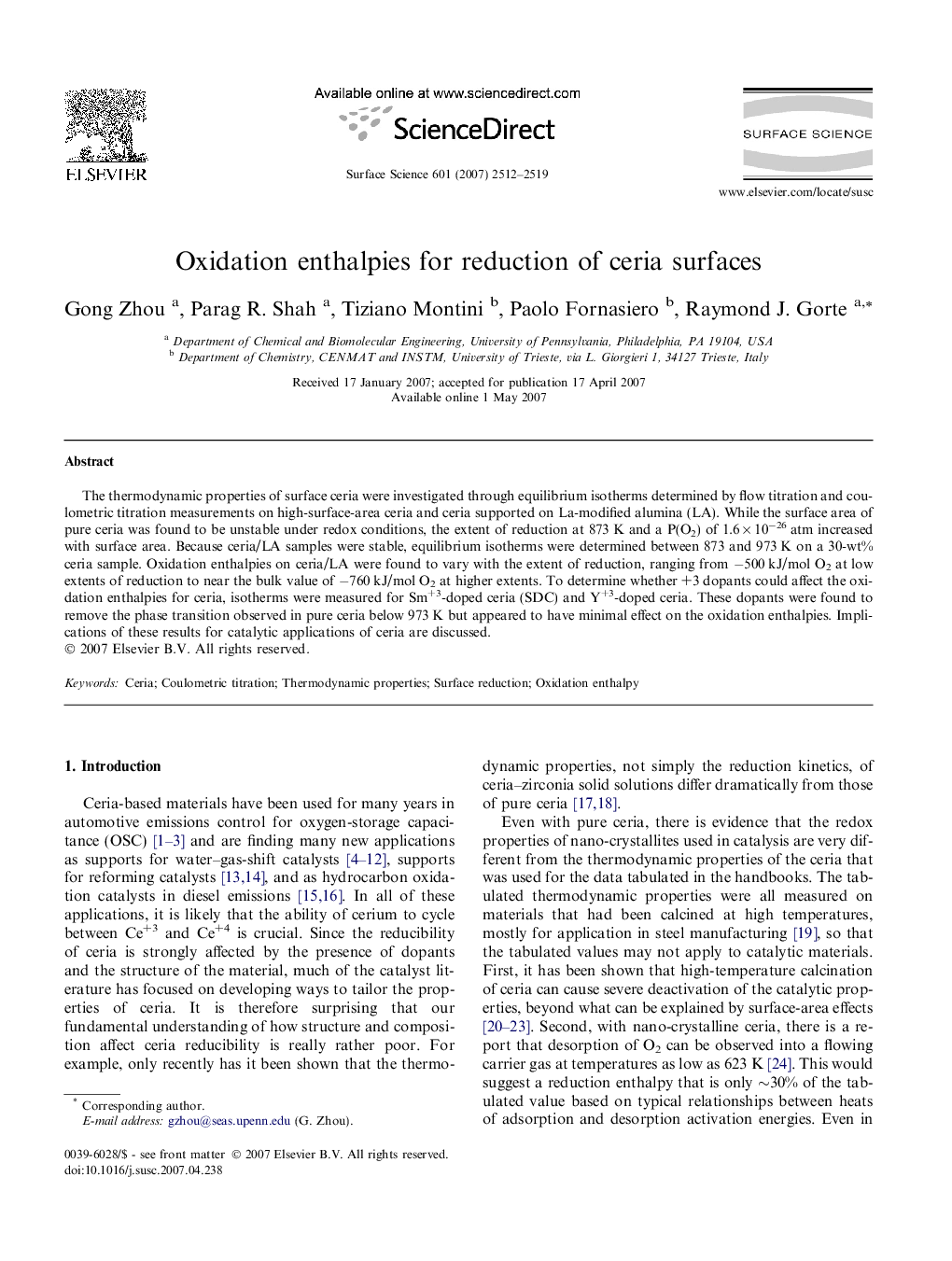| Article ID | Journal | Published Year | Pages | File Type |
|---|---|---|---|---|
| 5425049 | Surface Science | 2007 | 8 Pages |
Abstract
The thermodynamic properties of surface ceria were investigated through equilibrium isotherms determined by flow titration and coulometric titration measurements on high-surface-area ceria and ceria supported on La-modified alumina (LA). While the surface area of pure ceria was found to be unstable under redox conditions, the extent of reduction at 873Â K and a P(O2) of 1.6Â ÃÂ 10â26Â atm increased with surface area. Because ceria/LA samples were stable, equilibrium isotherms were determined between 873 and 973Â K on a 30-wt% ceria sample. Oxidation enthalpies on ceria/LA were found to vary with the extent of reduction, ranging from â500Â kJ/mol O2 at low extents of reduction to near the bulk value of â760Â kJ/mol O2 at higher extents. To determine whether +3 dopants could affect the oxidation enthalpies for ceria, isotherms were measured for Sm+3-doped ceria (SDC) and Y+3-doped ceria. These dopants were found to remove the phase transition observed in pure ceria below 973Â K but appeared to have minimal effect on the oxidation enthalpies. Implications of these results for catalytic applications of ceria are discussed.
Related Topics
Physical Sciences and Engineering
Chemistry
Physical and Theoretical Chemistry
Authors
Gong Zhou, Parag R. Shah, Tiziano Montini, Paolo Fornasiero, Raymond J. Gorte,
